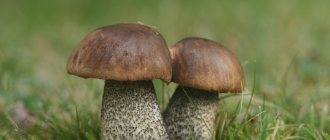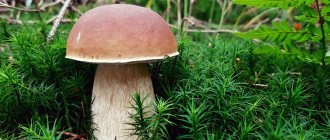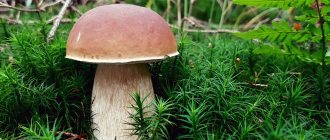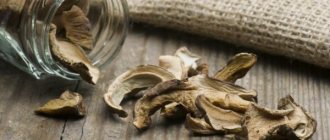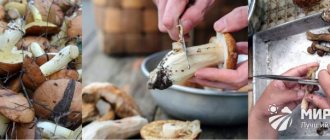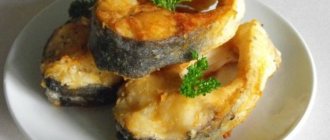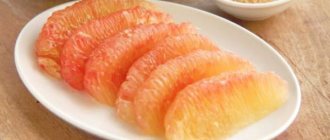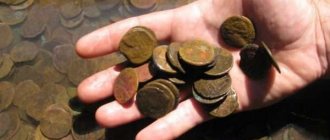Mushroom picking is a great opportunity to freshen up, take a walk through the forest and take a break from the hustle and bustle of the city. They go well with various types of meat, poultry and vegetables, and can also serve as an independent dish. After the mushrooms have been collected and everyone has returned home, the next stage begins - their cleaning and processing. In order to clean them correctly and efficiently, you need to know the basic rules and methods for processing such products.
General rules and recommendations for cleaning mushrooms
Mushrooms are a perishable product. After cutting, they quickly become flabby and lose their aroma. It will not be possible to put the baskets somewhere away and remember about them after 3-4 days. In addition, worms from already damaged specimens quickly move to still clean ones.
It is advisable to clean and process the collected mushrooms on the same day.
Basic tips for cleaning mushrooms:
- Start cleaning mushrooms while still in the forest, removing large debris - stuck twigs, needles, leaves. The base is cleared of sand and earth. You can cut off a little to check if the mushroom is wormy, and not take home something that you still have to throw away.
- Sort them out. Different types clean differently.
- It is more convenient to peel mushrooms with a small sharp knife with a thin blade. It will cut the flesh but not crumble it.
- Wear gloves. During the process of peeling mushrooms, your fingertips quickly darken.
- When washed, mushrooms absorb water, partially losing their taste. If possible, limit yourself to dry cleaning. If they are not very dirty, you can simply wipe them with a damp cloth, otherwise, go over them with a soft-bristled brush. When the dirt does not come off, scrape it or cut off these areas with a knife.
Where possible, it is best to limit mushrooms to dry cleaning.
Description of the appearance and differences between false doubles
Greenfinches got their name from the characteristic greenish color of the cap, which does not change even with heat treatment. On its convex surface there are small scales to which blades of grass, dry particles of leaves and sand stick.
As it grows, the cap becomes flat and wavy along the edge. The cylindrical leg grows up to 4-10 cm and is 1–2 cm wide. The pulp and plates are usually white or yellowish in color. The smell of sandstones is pleasant, floury.
Before you go into the forest, you need to arm yourself with knowledge. The most important thing in this matter is to distinguish edible types of mushrooms from “imposters”, false rows.
| Name | Description | Distinctive features |
| Death cap | The cap is pale olive in color, the skin is smooth, the stem is thin, white with veins. | A distinctive feature is the film “skirt” under the cap. |
| Golden row | The surface of the cap is convex, smooth, with curved edges. The color is milky yellow. The leg is curved, fibrous. | Features: reddish spots, medicinal smell. |
| Sultry row | A bell-shaped hat with a scaly surface. The color is brown, the flesh is watery, the stem is dense. | It has a disgustingly unpleasant smell. |
| Soap row | Pale olive with a red circle in the center, smooth cap. The plates are sparse, thin, yellowish in color. There are lilac or red spots on the leg. | When cooked, it releases a soapy-fruity smell. |
| Sulfur row | A convex, velvety cap of gray or yellowish color. The leg is cone-shaped. | The aroma is hydrogen sulfide, pungent. |
How to properly clean different types of mushrooms
The nuances of cleaning are determined mainly by the structural features of the mushrooms (spongy or lamellar).
White
You won't have to tinker with them for a long time. Just wipe the caps with a damp cloth and scrape off the stuck grains of sand with a knife. Cut off the base of the leg along with the ground.
Porcini mushrooms are not only very tasty, they are also a pleasure to peel
Boletus and boletus
Worms are especially fond of them. First check this by cutting off the base of the stem. Then separate it from the cap, scrape it with a knife, removing the black “patina”, and quickly rinse in water. Wipe the hats with a damp cloth, cut them in half, also checking for worms. Cut off the sponge underneath. Firstly, it is in it that mosquito larvae most often settle, secondly, during the heat treatment it becomes unpleasantly slimy, and thirdly, it is very poorly digested.
When cleaning a boletus mushroom, be sure to cut both the stem and the cap to make sure that the mushroom is not wormy.
In very old mushrooms, the stems harden and become fibrous. It's better to throw them away.
Flywheels are cleaned in much the same way. They also remove the top layer of tissue from their darkened legs and remove the sponge. But you also need to remove the skin from the cap.
Many mushroom pickers neglect moss mushrooms, but they have a very good taste if you peel the cap
Butter
Their main feature is the stickiness of the skin on the cap. Dark marks on your hands take the longest to clean after cleaning, so be sure to wear gloves. When starting to clean, first cut the mushroom in half, making sure there are no worms in it, and cut off the base of the stem. Then remove the skin from the cap, picking it up at the edge. If you leave the skin on, the finished dish will turn out unsightly dark, bitter and unpleasantly slimy. You can’t soak boletus, as its taste disappears very quickly.
The main difficulty when cleaning boletus is to remove the skin from the slippery cap.
Video: recommendations for cleaning boletus and porcini mushrooms
Honey mushrooms
Collecting them in whole “families” is quite easy, and so is cleaning. There are practically no worms in young mushrooms. First you need to cut off the hardened base of the stem and pour cool water over the mushrooms so that it completely covers them, literally for a minute. Then vigorously, but without damaging the mushrooms, stir the contents of the container and add water to the top. Clean mushrooms float to the surface, all the dirt remains at the bottom. Then you just need to remove them with a slotted spoon and use a knife to cut off the “skirt” on the leg.
Honey mushrooms are small mushrooms, so it is more convenient to clean them “in bulk”
Champignon
It is strongly recommended not to even rinse them quickly in water, let alone soak them. They absorb water like a sponge, turning into a tasteless mass. In young mushrooms, they limit themselves to cutting off the base of the stem. For old ones (more than 5–7 cm in diameter), remove the “skirt” and skin (like from a butter dish, from the edge to the middle of the cap). On the legs, the weathered, darkened tissues are cut off with a knife; in large champignons they are hard, so it is better to remove them completely.
For champignons, you will have to limit yourself to dry cleaning only.
Video: process of cleaning champignons
Chanterelles
Their big advantage is the complete absence of worms. The caps are washed to remove grains of sand, soil particles and plant debris under running water. After this, the bottom of the leg is cut off, and if there are dark areas, they are scraped with a knife. To prevent the chanterelles from breaking during the cleaning process, they are first doused with boiling water - the mushrooms become more “elastic.”
Chanterelles are one of the cleanest mushrooms inside, but sometimes you have to tinker with the dirt on the caps
Oyster mushrooms
Only mushrooms with a cap diameter of 10 cm or less are suitable for eating. For the rest, it is extremely tasteless, and the leg is generally inedible. Oyster mushrooms growing on trees do not need to clean their caps from soil, sand, or other debris. The bottom of the legs is cut off, if there are any darkened areas, and the mushrooms are washed in running cool water.
Before cleaning, oyster mushrooms are “calibrated”, selecting mushrooms that are too large and unsuitable for food.
Russula
The stem and cap are separated, the darkened tissues are cut off from the former, and the latter are wiped with a damp cloth, removing visible debris. Then the russula are filled with water for 15–20 minutes to clean the spaces between the plates. Very carefully remove the skin from the caps - the russula crumble easily.
To clean the dirt from the intervals between the russula plates, it is recommended to soak the mushrooms for a short time
In specimens with red caps, even when the skin is removed, a bitter taste remains. To get rid of it, cook the mushrooms for 15–20 minutes, only then start cooking.
greenfinch
They look very similar to russula, which is why they are cleaned the same way. If there are a lot of mushrooms, pour hot, but not boiling (85–90°C) water over them for 5–7 minutes so that it just covers the mushrooms. Then, using a slotted spoon, vigorously stir the contents of the container - the mushrooms rub against each other, the dirt lags behind. Clean greenfinches can be caught with the same slotted spoon or you can add more water so that they float to the surface.
The greenfinch (also known as greenfinch) does not look very appetizing, the characteristic shade remains even after heat treatment
Milk mushrooms, valui (gobies) and saffron milk caps
They grow mainly underground, so they need to be thoroughly cleaned of soil particles and grains of sand. To effectively get rid of debris, mushrooms are soaked in cold water for 1–3 days (it needs to be changed 3–4 times a day). The same technique helps to neutralize the bitter taste inherent in milk mushrooms and gobies. They are first cut in half to reject wormy specimens.
Is it possible to dry Greenberries?
When cutting a greenfinch, you need to hold it vertically and immediately cut off the base of the stem with the adhering soil. ... Green row belongs to the group of conditionally edible mushrooms. It can be dried, salted and frozen. When dried, the taste of greenberries noticeably intensifies, and when cooked, its color becomes more intense.
Interesting materials:
How to paint MDF facades correctly? How to properly wash zelmer with a washing vacuum cleaner? How to properly wash parquet? How to properly wash a hairpiece? How to start doing planks correctly? How to apply color correctly? How to write a resignation letter during a probationary period? How should you run? How to sheathe a veranda correctly? How to properly format applications in content?
When to wash and soak mushrooms
It is best to avoid washing mushrooms if possible. Spongy (and some lamellar) varieties quickly absorb moisture, losing flavor. The best option is dry cleaning and wiping with a damp cloth.
All so-called milkweeds need soaking. Cuts of such mushrooms exude white (only saffron milk caps have orange) juice and are used for pickling. These include milk mushrooms, valui, and tremors. Soaking helps repel unpleasant bitterness.
They are filled with cold water for at least a day, maximum for three, changing it at least once a day (preferably 3-4). For little-known bitters and pigs, the period increases to 4–7 days. If you add salt to the water (about a tablespoon per liter), you will get rid of the worms in the pulp.
After soaking the mushrooms, do not forget to regularly change the water in the container at least once a day
It is also recommended to soak Polish mushrooms. Any damaged areas quickly turn blue. When cooked, the liquid turns out almost black. Soaking for 3-4 hours allows the mushrooms to return to a more aesthetically pleasing light color.
The slightest damage to the Polish mushroom leads to its flesh turning blue
Video: the process of soaking mushrooms
General information
Each type of mushroom is cooked separately and may require different levels of cleaning. It is better to throw away copies of accessories that you already have doubts at home. The same applies to low-quality mushrooms. Urgency is also important in the sense that among the mushrooms there may be worms. If there are several mushrooms spoiled by worms in the basket, the parasites can spread to all the others, greatly reducing the number of delicacies obtained. Processing of mushrooms must be completed no later than 6 hours, otherwise the proteins in them will begin to disintegrate.
Important! Start cleaning the mushrooms dry. Water makes some mushrooms very slippery, others loose and brittle. In any case, it is easier to remove debris from dry mushrooms.
How long to soak boletus mushrooms
If the boletus is slightly wormy, you can soak it in water. To do this, add 40 g of salt to 1 liter of water, then pour the resulting solution into forest fruits for an hour. All worms and insects will leave the mushroom pulp during this time.
It is not always possible to easily remove contaminants from the surface of forest fruits. In this case, they are soaked in water. Half an hour is enough for the dirt to come off easily. But it is worth remembering that only strong and young specimens can be left. Old boletus and boletus absorb liquid well, which makes them limp.
You should not soak boletus mushrooms overnight, as they have a spongy structure that absorbs liquid abundantly. After this, they lose their high taste and density.
If the crop was harvested near highways or an industrial enterprise, then there is a high probability that the mushrooms contain hazardous metals and salts that they absorb from the soil. Experts recommend not collecting such specimens or, as a last resort, soaking them, but the process should not be lengthy. Maximum time is one hour. During the process, you need to change the water twice in order to clean the product as much as possible from the harmful substances contained in the composition.
If boletus and aspen mushrooms are collected in an ecologically clean place, deep in the forest or on the edges of the mushrooms away from the roadway, then there is no need for soaking, since the pulp of the mushrooms is not bitter.
Edibility
Sandpipers are in the edible category. They can be pickled, fried, boiled, stewed and salted.
The only negative is that the soil in which they grow often stains them, so you need to carefully treat the product before use. But this process is worth the finished result - the dishes turn out tasty and aromatic.
Botanical description
The mushroom also has the following names: sandstone, poplar, poplar row, poplar and poplar.
hat
At first it is convex in the middle and with the edges turned inward. As the hat grows, it straightens and bends inward. It is fleshy, and in high humidity or after rain it becomes slippery and acquires a light brown color. The diameter can reach 12 cm. The flesh of the cap is reddish.
Records
They are frequent and thin. At first they are white and cream in color, and then, along with the cap, they begin to turn brown.
Leg
Small and thin - up to 7 cm. Color can vary from white to milky. The inside is solid and fleshy. There is a small scaly coating on the outside.
Pulp
White, soft, fleshy, elastic. Under the skin it has a brownish tint, floury and bitter taste.
Do champignons need to be soaked?
These mushrooms not only contain a large amount of water, but also, due to their structure, absorb it very quickly, which reduces the shelf life of the product and negatively affects the taste. Therefore, there is no need to keep them in water for a long time, much less soak them before heat treatment . The younger and stronger the mushroom, the longer it can be subjected to “water procedures” without loss of quality. This applies to a store-bought product.
After washing, experts recommend blotting them with paper napkins and drying them for an additional 15 minutes on a regular dry towel; this will help quickly remove excess moisture and prevent them from softening.
Wild mushrooms are soaked for a very short time in a concentrated cold salt solution - 15 minutes is enough for insects or pests hiding inside the mushroom body to crawl out. The procedure will also facilitate easier removal of contaminants.
Is it necessary to soak boletus mushrooms?
To prevent the collected boletuses from darkening too quickly, you need to immerse them in slightly salted and always cold water. This method is only suitable for those specimens that do not plan to be dried and frozen.
If forest fruits need to be dried, then they cannot be soaked or even washed. Wet specimens take too long to dry and most often rot.
Advice! If the boletus mushrooms become dark and spoiled, you should throw them away immediately so as not to risk your health. Mushroom poisoning is the most severe type of intoxication.
